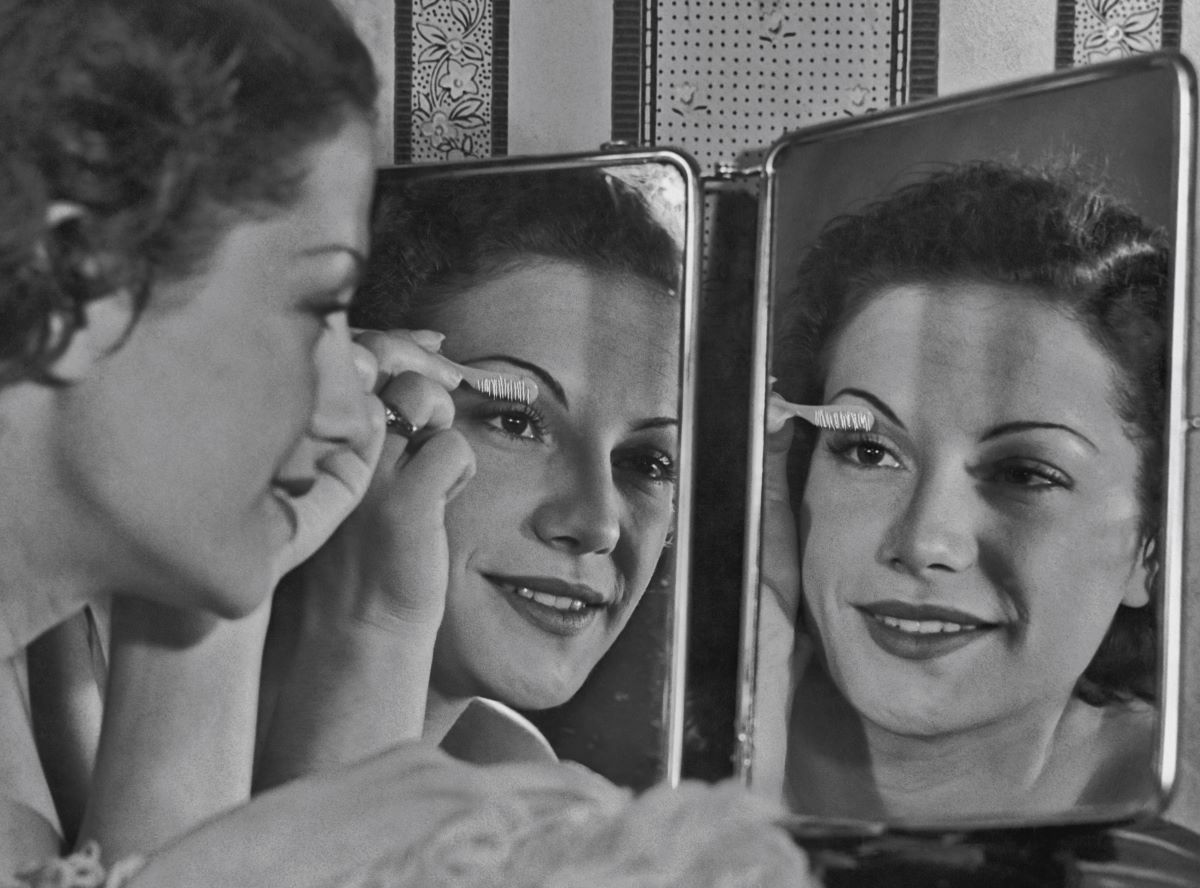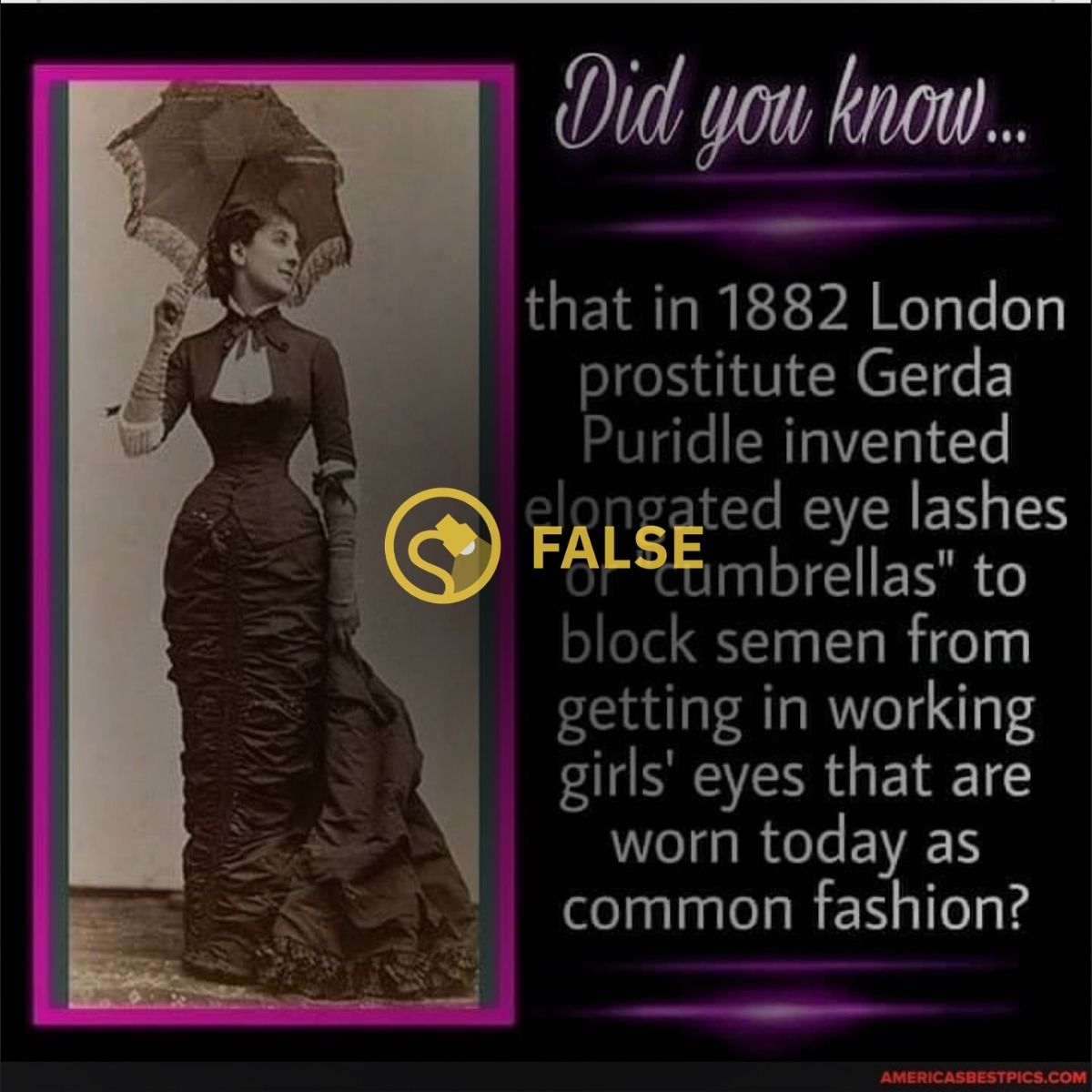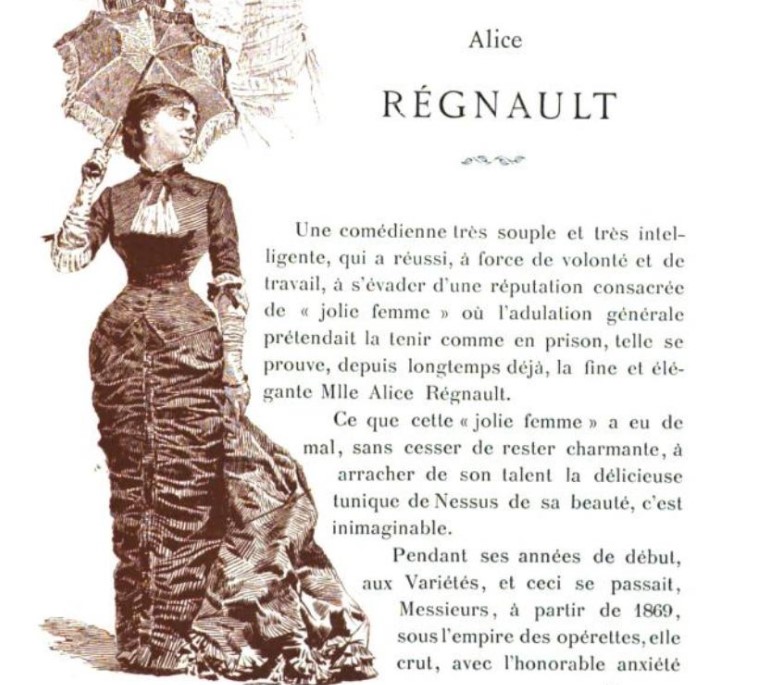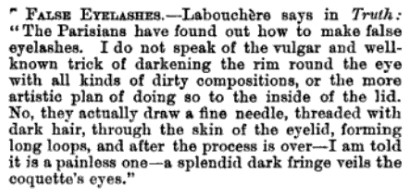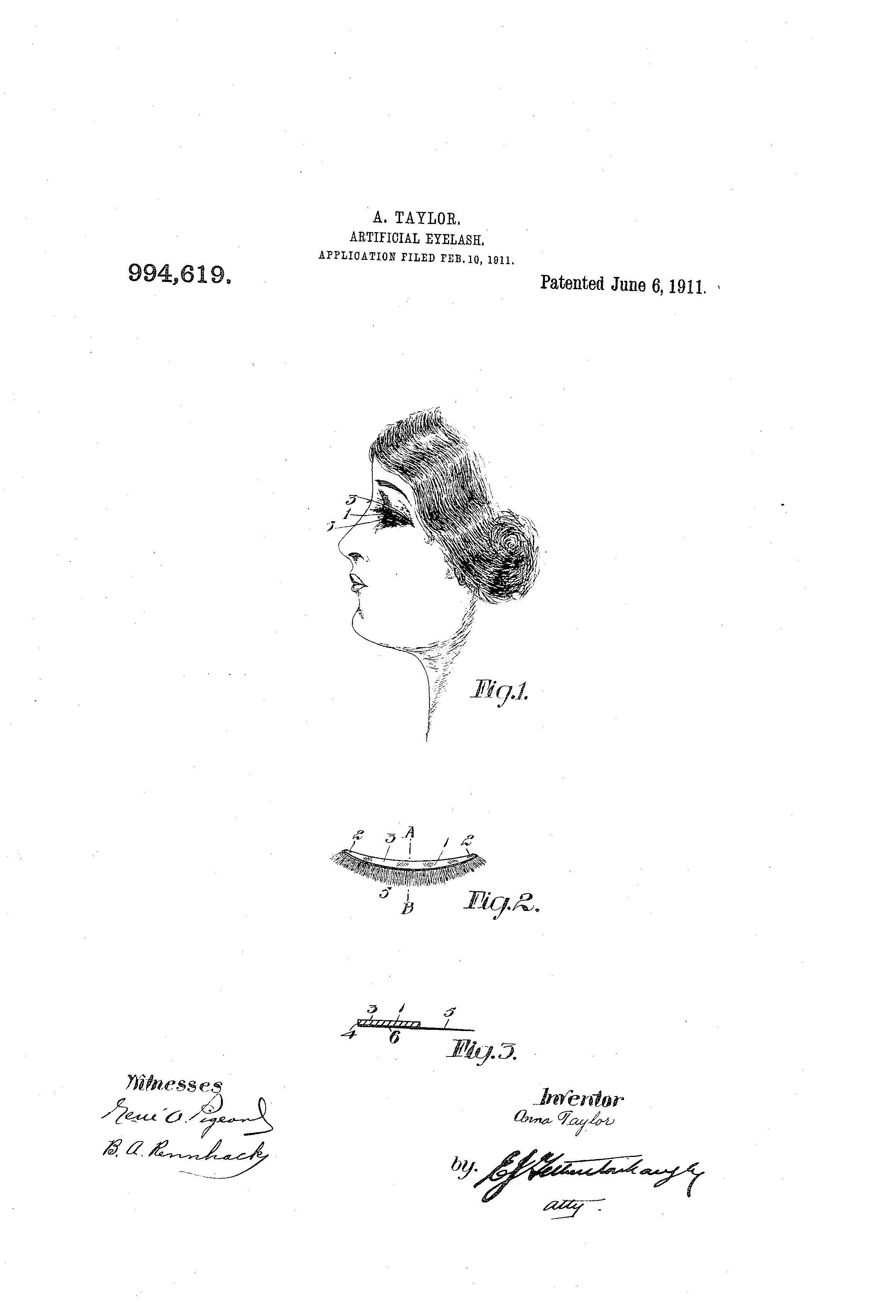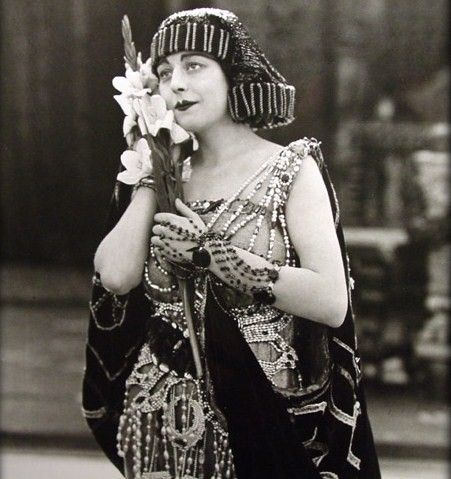In January 2021, the website America's Best Pics shared a meme claiming that a prostitute named "Gerda Puridle" invented long eyelashes in 1880s:
The woman in this picture was not a prostitute, her name was not Gerda Puridle, and the claim about the origins of artificial eyelashes was made up out of whole cloth.
The woman featured in this meme is Alice Regnault, a French actress and novelist who rose to prominence in the 1870s. This photograph appears to have been taken by French photographer Gaspard-Félix Tournachon (better known as "Nadar") circa 1879. It was included in a guide published a few years later called "Les Actrices de Paris" (The Actresses of Paris) by Emile Bergerat:
Here's how Regnault was described in "Les Actrices de Paris" (translated via Google and edited for clarity): "An intelligent and flexible actress who, through commitment and hard work, has managed to escape a reputation as a 'pretty woman' — where the love of the masses kept her, as in a prison. So has the fine and elegant Mademoiselle Régnault proven herself, for some time now."
While Regnault laid claim to titles such as actress, novelist, and journalist, she did not invent elongated eyelashes. According to beauty magazine Marie Claire, humans were tinkering with and beautifying their eyelashes in ancient Egypt, though it wasn't until the late 1800s that people figured out that they could lengthen their eyelashes with human hair. An 1882 volume of "Medical Record" explained the process of creating artificial eyelashes:
False Eyelashes - Labouchere says in Truth: The Parisians have found out how to make false eyelashes. I do not speak of the vulgar and well-known trick of darkening the rim round the eye with all kinds of dirty composition, or the more artistic plan of doing so to the inside of the lid. No, they actually draw a fine needle, threaded with dark hair, through the skin of the eyelid, forming long loops, and after the process if over - I am told it is a painless one - a splendid dark fringe veils the coquette's eyes."
While the practice of artificially elongating eyelashes started in the late 1800s, the first patent for an artificial eyelash wasn't secured until 1911. Here's a look at inventor Anna Taylor's artificial eyelash patent:
Despite the fact that artificial eyelashes have been around since the late 1800s, and that Taylor filed a patent in 1911, many people credit filmmaker D.W. Griffith for popularizing artificial eyelashes with his 1916 film "Intolerance." The New York Times reported:
One day in 1916, while filming "Intolerance," D. W. Griffith studied an actress in a Babylonian costume and felt something wasn't right. Seena Owen's eyes, he said, should be twice as large and "supernatural." He ordered his wigmaker to use spirit gum to glue a pair of lashes made from human hair onto Owen's eyelids. "One morning she arrived at the studio with her eyes swollen nearly shut," the actress Lillian Gish, who was also in the movie, wrote in her memoir. "Fortunately, Mr. Griffith had already shot the important scenes." Within a decade, false lashes became standard equipment for actresses — and for flappers who imitated the "baby doll" eyes that they saw on-screen.
Gish claimed that Griffith invented false eyelashes, but like many Hollywood legends, this one proves to be not exactly true. In 1911, a Canadian woman named Anna Taylor received a U.S. patent for the artificial eyelash; hers was a crescent of fabric implanted with tiny hairs. And even before that, hairdressers and makeup artists tried a similar trick. A German named Charles Nestle (nee Karl Nessler) manufactured false lashes in the early 20th century and used the profit from sales to finance his next invention — the permanent wave. By 1915, Nestle had opened a New York hair-perming salon on East 49th Street, with lashes as his sideline. Nestle promoted false eyelashes as a guard against the glare of electric lights and hired chorus girls to bat their eyes at customers. To some men of the era, it was as if a booby trap had been introduced in the war between the sexes. "When a fair young thing looks at you mistily through her long, curling lashes, do not fall for it until you investigate," warned one columnist in 1921. "The long, curling eyelashes may not be hers, except by right of purchase."
In short, the claim that a prostitute named Gerda Puridle invented elongated eyelashes is completely made up out of whole cloth.
